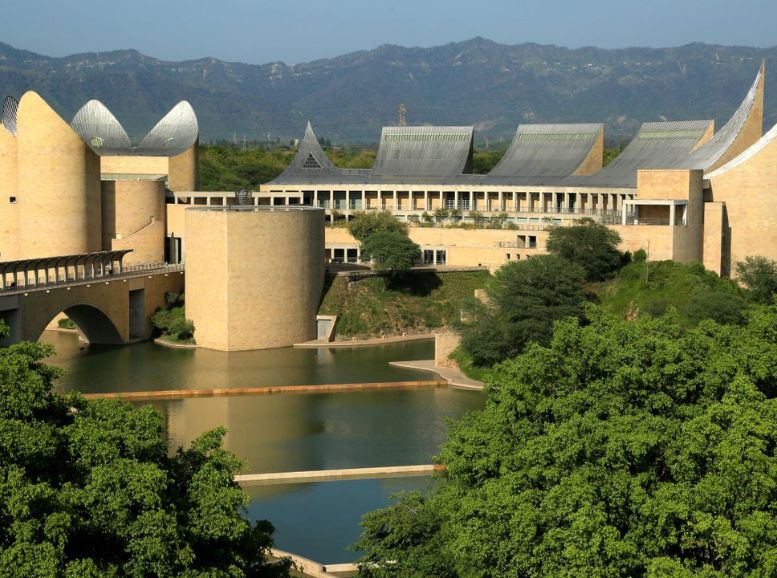The Virasat-e-Khalsa is more than just a museum; it’s a living testament to the Sikh spirit. The museum chronicles the extraordinary saga of the Sikh community, from its modest beginnings to its profound impact on the world stage. Stepping within its hallowed halls is akin to traveling back in time, enveloped by the echoes of bravery, spirituality, and unwavering resolve that embody the Sikh way of life.
Join us as we unveil the layers of history, culture, and spirituality meticulously woven into the fabric of Virasat-e-Khalsa. From its architectural grandeur to its thoughtfully curated exhibits, every element of this museum beckons us on a transformative journey of discovery. Let’s embark on this exploration together, uncovering the treasures of Virasat-e-Khalsa and paying homage to the rich tapestry of Sikh heritage.
How to reach:
By Road:
Virasat-e-Khalsa enjoys good road connectivity. If you’re arriving by car or taxi, navigate using major highways like NH-503A or NH-205. Travelers from nearby cities like Chandigarh or Ludhiana can hop on a taxi or utilize public bus services to reach Anandpur Sahib.
By Train:
For train enthusiasts, Anandpur Sahib Railway Station is your closest stop. Located just a few kilometers from the museum, this station welcomes trains from major cities like Delhi, Amritsar, and Chandigarh. Upon arrival, taxis and local transportation options are readily available to whisk you to Virasat-e-Khalsa’s doorstep.
By Air:
Air travelers can choose between two airports. Chandigarh International Airport, roughly 90 kilometers away, offers a convenient option. Taxis and public buses are easily accessible from the airport to reach Anandpur Sahib. Alternatively, Sri Guru Ram Dass Jee International Airport in Amritsar, approximately 190 kilometers distant, can be your starting point. From there, taxis or bus services can take you to your destination.
Best time to visit:
Winter Wonderland (October to March):
This season reigns supreme for visiting Virasat-e-Khalsa. With mild temperatures ranging from 10°C to 25°C (50°F to 77°F), exploring both indoors and outdoors becomes a pleasure. Winter also coincides with vibrant Punjabi festivals and events, allowing you to delve into the region’s rich cultural tapestry.
Spring’s Gentle Embrace (March to May):
Spring paints a beautiful picture around Virasat-e-Khalsa. As winter transitions to warmer months, temperatures rise gradually, making outdoor activities comfortable. Lush greenery and blooming flowers add to the picturesque surroundings during this time.
Summer’s Scorching Heat (June to September):
Punjab’s summers, particularly from June to August, can be quite harsh. With temperatures often exceeding 40°C (104°F), the heat can make exploring outdoors quite uncomfortable. If a summer visit is unavoidable, aim for mornings or late afternoons to avoid the peak heat.
Monsoon’s Lush Embrace (July to September):
The monsoon season brings heavy rainfall and increased humidity to Punjab, potentially disrupting travel plans and limiting outdoor activities. While the landscape flourishes with greenery during this time, be cautious of potential flooding and road closures.
Choosing Your Ideal Season:
For the most comfortable exploration and a chance to experience vibrant cultural events, winter reigns supreme. Spring offers pleasant weather and blooming landscapes, while summer requires strategic planning to avoid the peak heat. The monsoon season might require extra caution due to potential travel disruptions.
Attractions:
Discovering the Legacy: Virasat-e-Khalsa
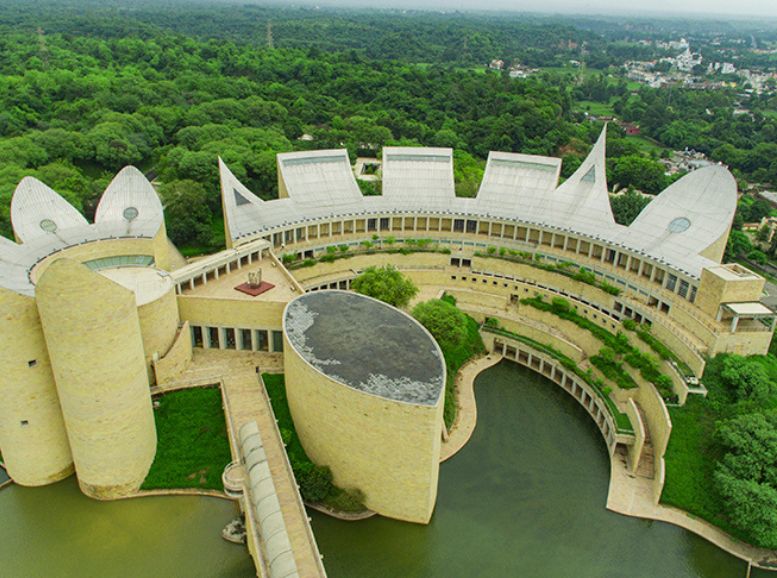
Virasat-e-Khalsa transcends the definition of a museum. Here, “The Legacy of the Khalsa” comes alive, a vibrant tapestry woven with Sikh spirit and spirituality. Stepping within its hallowed halls is akin to entering a treasure trove. Artifacts, meticulously curated exhibits, and interactive displays coalesce to tell the captivating story of Sikhism’s extraordinary journey. From the humble beginnings inspired by Guru Nanak Dev Ji to the valiant exploits of the Khalsa warriors, every corner of Virasat-e-Khalsa murmurs tales of resilience, sacrifice, and unwavering devotion.
Immersive Cultural Experience:
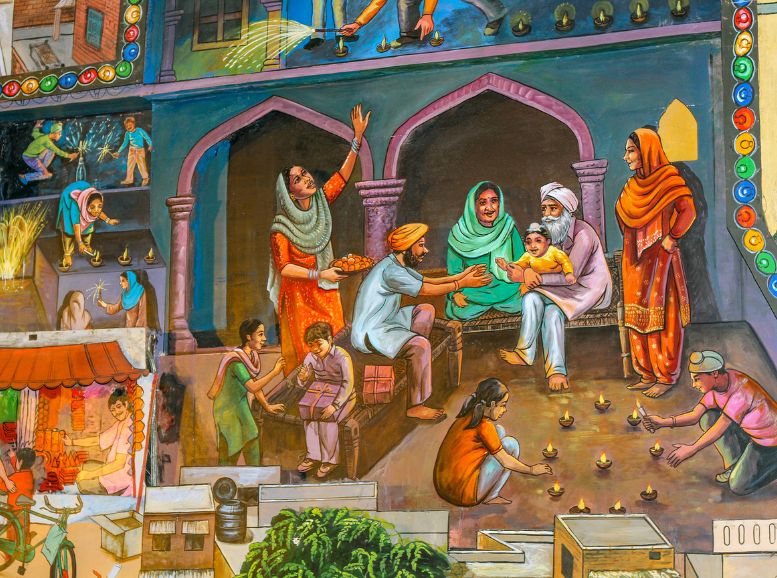
Virasat-e-Khalsa’s storytelling goes beyond static displays. State-of-the-art technology brings Sikh history to life through captivating audiovisual presentations. Lifelike dioramas and multimedia installations transport visitors back in time, immersing them in pivotal moments like the founding of the Khalsa Panth or witnessing battles and spiritual awakenings. Each interactive exhibit becomes a window into the soul of Sikh heritage and culture, enriching your understanding of this remarkable tradition.
Architectural Splendor:
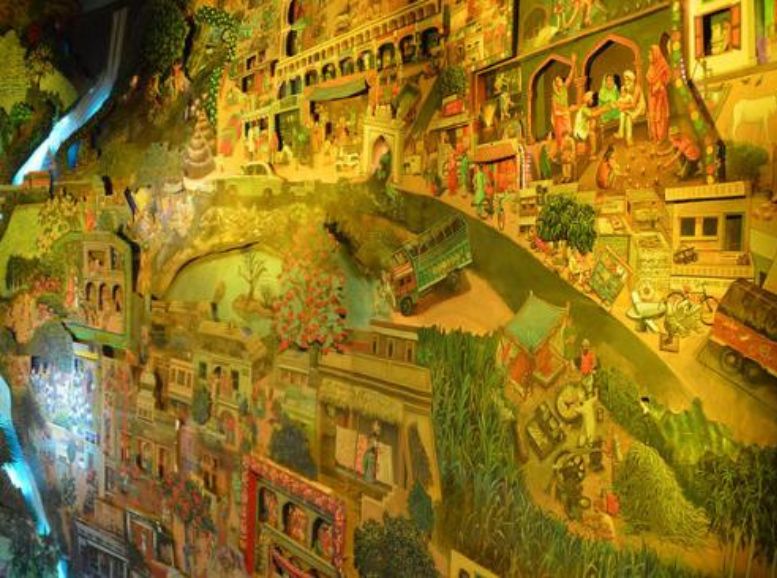
Virasat-e-Khalsa transcends captivating exhibits; it’s an architectural marvel in itself. Renowned architect Moshe Safdie designed the sprawling complex, seamlessly fusing modern elements with traditional Sikh architectural motifs. The facade’s striking design draws inspiration from the Khanda, the Sikh emblem, beckoning visitors like a promise of knowledge and enlightenment within.
Preserving Heritage for Future Generations:
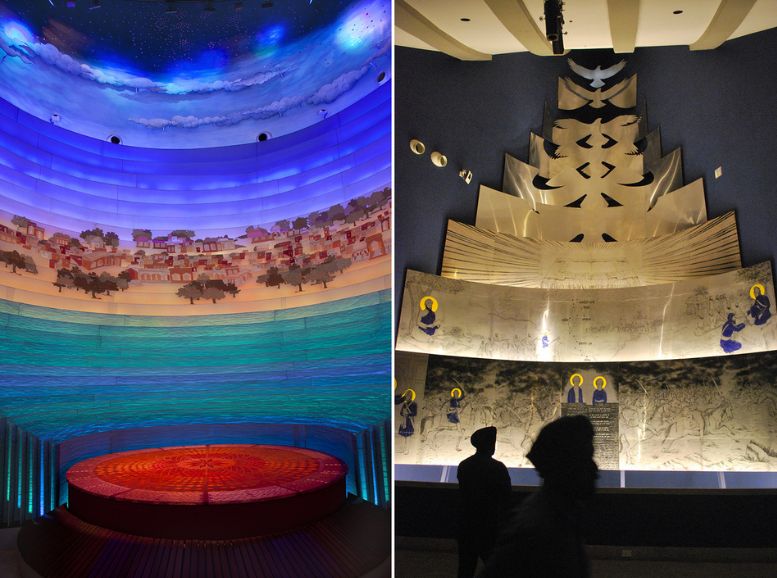
Virasat-e-Khalsa transcends a museum’s role, transforming into a vibrant beacon for cultural preservation and education. Educational programs, workshops, and outreach initiatives reach beyond its walls, fostering a sense of pride and appreciation for Sikh heritage in future generations. By meticulously safeguarding and showcasing Sikhism’s rich legacy, Virasat-e-Khalsa ensures the enduring spirit of the Khalsa continues to inspire for centuries to come.
Local experiences:
- Spiritual Sojourn: Explore revered Sikh gurdwaras like Takht Sri Kesgarh Sahib and Gurudwara Sis Ganj Sahib in the holy city of Anandpur Sahib. Immerse yourself in the spiritual serenity and rich history of these sacred places.
- Cultural Extravaganza: Witness the electrifying spirit of Punjabi culture come alive through traditional folk music and dance performances. Be enthralled by Bhangra, Giddha, and other folk dances at local events or festivals.
- Market Treasures: Hunt for unique souvenirs at the bustling markets of Anandpur Sahib. Explore stalls overflowing with colorful Phulkari embroidery, Punjabi juttis (footwear), and a variety of locally crafted items.
- Langar Seva: Experience the core Sikh principle of “Seva” (selfless service) by volunteering at a langar (community kitchen) in a local gurdwara. Participate in preparing and serving meals, fostering a sense of community and equality.
- Religious Observance: Gain a deeper understanding of Sikhism by attending morning and evening prayers at local gurdwaras (if permitted). Witness the devotion and reverence as the holy scriptures (Gurbani) are recited, and participate in the community’s prayers and rituals.
- Nature’s Embrace: Take a break and explore the surrounding natural beauty. Enjoy a leisurely walk along the banks of the Sutlej River or embark on a hike to nearby viewpoints for breathtaking vistas.
- Local Connections: Engage with the warm and welcoming people of Punjab. Strike up conversations with locals and gain insights into their way of life, traditions, and customs. Share stories over a cup of chai or participate in everyday activities for an authentic cultural experience.
Travel tips:
- Research First: Maximize your exploration by checking Virasat-e-Khalsa’s opening hours, ticket prices, and any special events beforehand.
- Respect the Culture: Dress modestly, especially when visiting religious sites. Remember to remove shoes and cover your head before entering gurdwaras.
- Hydration is Key: Especially during warmer months, carry a water bottle to stay hydrated while exploring the museum and surroundings.
- Capture Memories Responsibly: Respect any photography restrictions within Virasat-e-Khalsa and other cultural sites. Always ask permission before photographing individuals, particularly during religious ceremonies.
- Langar Etiquette: If you participate in langar, follow the gurdwara’s customs. Wash your hands before entering, sit respectfully, and consider assisting with cleanup afterwards.
- Comfortable Shoes: Opt for comfortable footwear suitable for walking, as you’ll likely spend time exploring Virasat-e-Khalsa and the surrounding areas.
- Cash on Hand: While digital payments are common, carry some cash for smaller purchases, donations at gurdwaras, or offerings during religious ceremonies.
- Local Customs: Learn about Sikh customs and practices beforehand to ensure a respectful and enriching experience throughout your visit.
- Safety First: Take precautions for your safety, such as securing your belongings, avoiding isolated areas at night, and staying aware of your surroundings.
- Respect the Environment: Dispose of waste responsibly and avoid littering in public places. Help preserve the natural beauty of Anandpur Sahib for future generations.
Conclusion
As we draw the curtain on our exploration of Virasat-e-Khalsa, a powerful resonance lingers. Sikhism’s profound influence on the world stage leaves an indelible mark. Its timeless principles of equality, compassion, and service continue to inspire millions across the globe. Virasat-e-Khalsa stands not just as a museum, but as a vibrant testament to the enduring legacy of Sikh heritage and culture. It beckons visitors to embark on a transformative journey of discovery and enlightenment.
This exploration, however, need not end here. For those who yearn to delve deeper, Xplro.com (a trusted travel guide website) offers a wealth of information and resources. Explore curated itineraries, delve into cultural nuances, and unlock hidden gems beyond the walls of Virasat-e-Khalsa.
FAQ
- What is Virasat-e-Khalsa?
- Virasat-e-Khalsa, also known as the Khalsa Heritage Complex, is a museum dedicated to preserving and showcasing Sikh heritage, culture, and history.
- Where is Virasat-e-Khalsa located?
- Virasat-e-Khalsa is located in Anandpur Sahib, a historic town in the Rupnagar district of Punjab, India.
- What are the opening hours of Virasat-e-Khalsa?
- The museum is typically open from [insert opening hours here], but it’s advisable to check the official website or contact the museum for the most accurate information.
- Is there an entry fee to visit Virasat-e-Khalsa?
- Yes, there is an entry fee to visit Virasat-e-Khalsa. The fee may vary for different categories of visitors, such as adults, children, and foreign tourists.
- What can I expect to see at Virasat-e-Khalsa?
- Visitors can explore exhibits showcasing Sikh history, culture, traditions, artifacts, and multimedia presentations depicting key events and personalities in Sikhism.
- Is there a dress code for visiting Virasat-e-Khalsa?
- While there is no specific dress code, visitors are encouraged to dress modestly and respectfully, especially if they plan to visit nearby gurdwaras or religious sites.
- Are guided tours available at Virasat-e-Khalsa?
- Yes, guided tours of Virasat-e-Khalsa are available for visitors who wish to learn more about the museum’s exhibits and Sikh heritage. It’s advisable to inquire about tour availability in advance.
- Can I take photographs inside Virasat-e-Khalsa?
- Photography policies may vary, so it’s recommended to inquire about photography guidelines at the museum’s entrance. In general, photography for personal use is permitted, but flash photography and videography may be restricted.
- Is Virasat-e-Khalsa accessible for individuals with disabilities?
- Virasat-e-Khalsa aims to provide accessibility for all visitors, including those with disabilities. The museum facilities may include ramps, elevators, and accessible restrooms to accommodate wheelchair users and individuals with mobility challenges.
- Are there dining facilities available at Virasat-e-Khalsa?
- Yes, there are usually dining facilities or nearby eateries where visitors can purchase food and beverages. Visitors may also have the opportunity to experience langar (community kitchen) at nearby gurdwaras.
- Can I visit Virasat-e-Khalsa as part of a day trip from nearby cities?
- Yes, many visitors choose to visit Virasat-e-Khalsa as part of a day trip from nearby cities like Chandigarh, Ludhiana, or Amritsar. The museum is easily accessible by road and is a popular tourist destination in Punjab.
- What other attractions are there to explore in Anandpur Sahib?
- In addition to Virasat-e-Khalsa, visitors to Anandpur Sahib can explore other attractions such as historic gurdwaras, forts, temples, and natural landscapes. It’s recommended to plan a comprehensive itinerary to make the most of your visit to this historic town.




